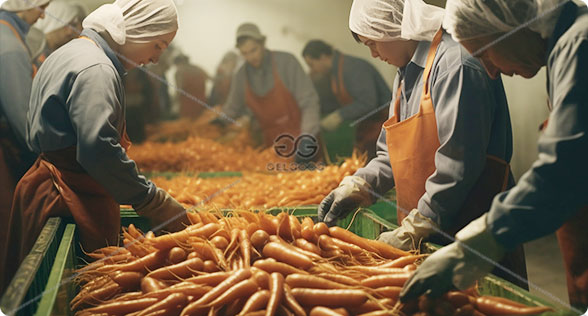How to built frozen vegetables factory? Building a frozen vegetable factory requires careful planning and reasonable investment. From site selection, equipment procurement to process flow and market sales, every step determines the plant's operating efficiency and product quality.

1. Site selection and factory construction
(1) Site selection
Site selection is crucial to the operation of a quick-freezing plant, and the following factors need to be considered:
Close to the vegetable planting base: Reduce the transportation cost of raw materials and ensure the freshness of vegetables.
Convenient transportation: Convenient for the transportation of raw materials and finished products, preferably close to a highway or logistics center.
Adequate water and electricity supply: Quick-freezing processing requires a large amount of water, and a stable power supply ensures the normal operation of the equipment.
Comply with environmental protection requirements: Reasonably handle wastewater and waste residue to avoid environmental pollution.
(2)Factory construction
The factory needs to include the following functional areas:
Raw material storage area: used for temporary storage of purchased vegetables, which needs to be kept at low temperature and ventilation.
Washing and cutting area: equipped with washing machines, vegetable cutters, etc. for preliminary processing.
Freezing area: the core area, which needs to be equipped with freezing equipment.
Packaging and storage area: After freezing, it needs to be packaged and stored in a cold storage, and the temperature of the cold storage should be maintained below -18℃.
2. Equipment procurement
Frozen vegetable factory need to be equipped with a series of special equipment, including:
(1) Vegetable washing machine: used to remove mud and pesticide residues on the surface of vegetables and improve product hygiene standards. Bubble washing machine, drum washing machine, etc. can be selected.
(2) Vegetable cutting machine: used to cut vegetables into different shapes, such as blocks, strips, slices, etc., to meet market demand.
(3) Blanching machine: Some vegetables need to be blanched to maintain color, remove microorganisms and improve quick freezing effect.
(4) Quick freezing equipment: core equipment, including the following common quick freezing methods:
Fluidized quick freezing machine (IQF): suitable for granular vegetables such as peas and corn.
Tunnel quick freezing machine: suitable for leafy vegetables and root vegetables.
(5) Packaging equipment: including automatic weighing machine, sealing machine, vacuum packaging machine, etc., to ensure that product packaging meets market standards.
(6) Cold storage: used to store quick-frozen vegetables, which need to maintain low temperature and ensure uniform temperature.
3. Personnel recruitment and management
Depending on the size of the factory, employees for different positions need to be recruited, such as:
Operators: responsible for cleaning, cutting, quick freezing and packaging.
Quality inspectors: responsible for testing raw materials and finished products to ensure compliance with food safety standards.
Equipment maintenance personnel: ensure the normal operation of equipment and regular maintenance.
Managers: responsible for production scheduling, procurement, sales, etc.
4. Quality control and food safety
Food safety is the core of the frozen vegetable industry, and it is necessary to do the following:
Strictly test raw materials: ensure that there is no pesticide residue and no mold.
Sanitary management: workers must wear gloves and hats when operating, and equipment must be disinfected regularly.
Temperature control: The temperature must be strictly controlled throughout the quick-freezing process to prevent thawing and deterioration.
Comply with food safety standards: production management is carried out in accordance with ISO 22000, HACCP and other food safety systems.